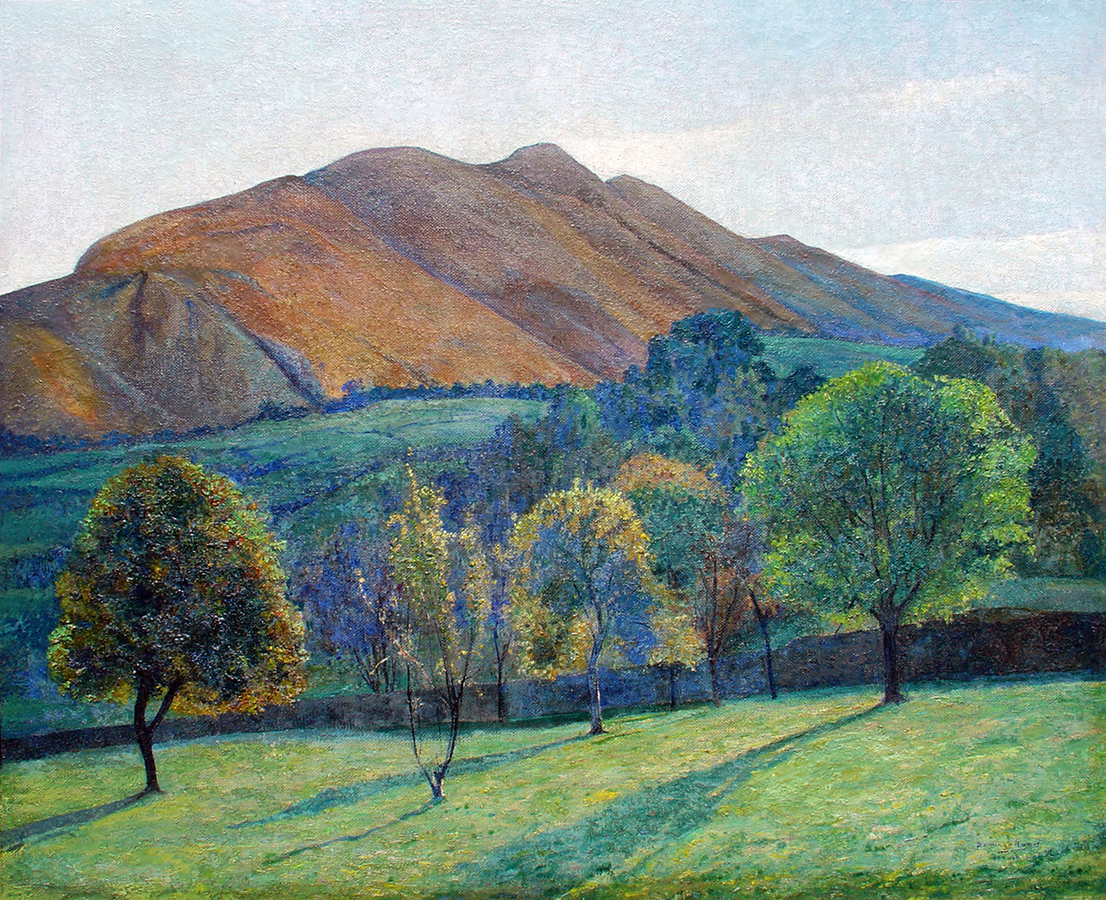 Domingo Ramos Domingo Ramos
Period: Early Republic
1894 - 1956
Landscape and Mountain
Paisaje y Montaña , ca. 1935
oil on canvas
37 1/4 x 45 1/4 inches
Domingo Ramos Enriquez (1894- 1956) He was born in Guines, Havana Province, on November 6, 1894. In 1907 he was admitted to San Alejandro, and in 1918 he received, from the National Congress, a scholarship to study in Spain at the famous San Fernando School in Madrid. In 1919 he displayed his paintings in Barcelona and after his return to Cuba he was named Professor at the San Alejandro Academy. In 1943 he was assigned the subject Landscape, and in 1949, he occupied the position of Principal of the School. In 1947 he was designated member of the Royal Society of Art, based in London. In his productive artistic career, Domingo Ramos presented over twenty personal exhibits of his artworks. He also participated in a great number of collective exhibits. He won prizes and medals in Cuba, Europe and New York, such as: in the National Academy of Arts and Letters of Havana, in 1916; in the Salon Annual del Circulo de Bellas Artes de la Habana (Annual Salon of the Fine Arts Club of Havana) in 1936 and 1938; in the Exposicion Ibero-Americana de Sevilla (Iberian American Exhibit of Sevilla), in 1930; in the World Fair of New York, in 1939 and in the Latin-American Exhibit of New York, in 1942. His paintings are included in important national and foreign collections. The Museum of Modern Art of Madrid acquired his artwork Coloso en la Cumbre (Colossus on the Summit). Some other paintings of his used to belong to the collections of the Presidential Palace of the Republic and the National Capitol. The National Museum of Fine Arts also holds works of art of this outstanding painter. “Landscape painter of wonderful use of colors, vigorous technique and fecund production”, that’s how the Encyclopedia of Art in America describes Domingo Ramos. This artist cultivated with brilliant success the Cuban landscape, capturing in it, the light of the tropic and his love for his land. He passed away in Havana, in 1956.
|
